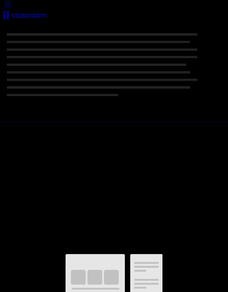Imagine Learning Classroom
Learn Zillion: Connect Examples, Body Paragraphs, and Reasons With the Thesis
In this lesson, you will learn how to make your essay flow by connecting your examples, facts, and reasons to your thesis. [3:14]
Imagine Learning Classroom
Learn Zillion: Organize Ideas and Evidence for Responding to Constructed Response
In this lesson, you will learn how to organize your evidence by writing supporting paragraphs. [5:31]
Imagine Learning Classroom
Learn Zillion: Draft a Conclusion That Will Leave Your Reader Thinking
In this lesson, you will learn how to draft a conclusion that will leave your reader thinking by explaining what will happen when changes are made and making a plea for action. [4:44]
Imagine Learning Classroom
Learn Zillion: Analyze a Constructed Response Question
In this lesson, you will learn how to interpret a prompt by summarizing, restating, and inferring. [5:09]
Imagine Learning Classroom
Learn Zillion: Writing a Hook Sentence and Introducing a Thesis Statement
In this lesson, you will learn how to begin your response by first hooking the reader and then telling them what you will be arguing. [4:46]
Imagine Learning Classroom
Learn Zillion: Write a Conclusion Referring to "Big Ideas"
In this lesson, you will learn how to conclude your response by referring to the prompt and the "big ideas" of your response. [4:55]
Imagine Learning Classroom
Learn Zillion: Organize the Body of an Essay
In this lesson, you will learn how to organize the body of your essay by using boxes and bullets. [5:05]
Imagine Learning Classroom
Learn Zillion: Write a Conclusion
In this lesson, you will learn how to conclude your argumentative essay by summarizing your key points and telling your reader to take action. [5:35]
Imagine Learning Classroom
Learn Zillion: Reading and Understanding a Writing Prompt
In this lesson, you will learn how to read and understand what a prompt requires by underlining key words and deciding if you need to write a narrative or an essay. [2:45]
Imagine Learning Classroom
Learn Zillion: Identify Key Ideas in a Narrative Writing Prompt
In this lesson, you will learn how to figure out what type of writing you should do to answer a prompt by identifying the key ideas in the prompt. [4:08]
Imagine Learning Classroom
Learn Zillion: Draft an Introductory Paragraph for an Argumentative Essay
In this lesson, you will learn how to write an introductory paragraph by hooking your reader and stating your thesis. [4:18]
Imagine Learning Classroom
Learn Zillion: Write Body Paragraphs for a Persuasive Letter
In this lesson, you will learn how to you write body paragraphs by stating your reason and then supporting it with evidence. [4:53]
Imagine Learning Classroom
Learn Zillion: Develop Supporting Evidence for a Persuasive Letter
In this lesson, you will learn how to develop strong supporting evidence by including cause and effect. [3:58]
Imagine Learning Classroom
Learn Zillion: Draft an Opening With an Engaging Story
In this lesson, you will learn how to draft an engaging opening by writing a story that connects to your opinion. [4:36]
Imagine Learning Classroom
Learn Zillion: Organize Ideas Chronologically for a Narrative
In this lesson, you will learn how to tell your story step-by-step by getting the memory in your head and thinking "What happened first, then next, then next." [4:43]
Imagine Learning Classroom
Learn Zillion: Planning a Narrative Response to a Prompt
In this lesson, you will plan your writing by using boxes and bullets to organize each part of your narrative. [4:04]
Imagine Learning Classroom
Learn Zillion: Draft a Concluding Paragraph for a Persuasive Letter
In this lesson, you will learn how to write a memorable closing paragraph by explaining why your opinion matters. [4:50]
Imagine Learning Classroom
Learn Zillion: Write a Conclusion to an Informational Text Recap and Reflect
In this lesson, you will learn how to write your conclusion by recapping and reflecting. [4:52]
Imagine Learning Classroom
Learn Zillion: Using Paragraph Form
In this lesson, you will learn how to organize ideas and evidence in a persuasive essay by using paragraph form. [7:14]


















